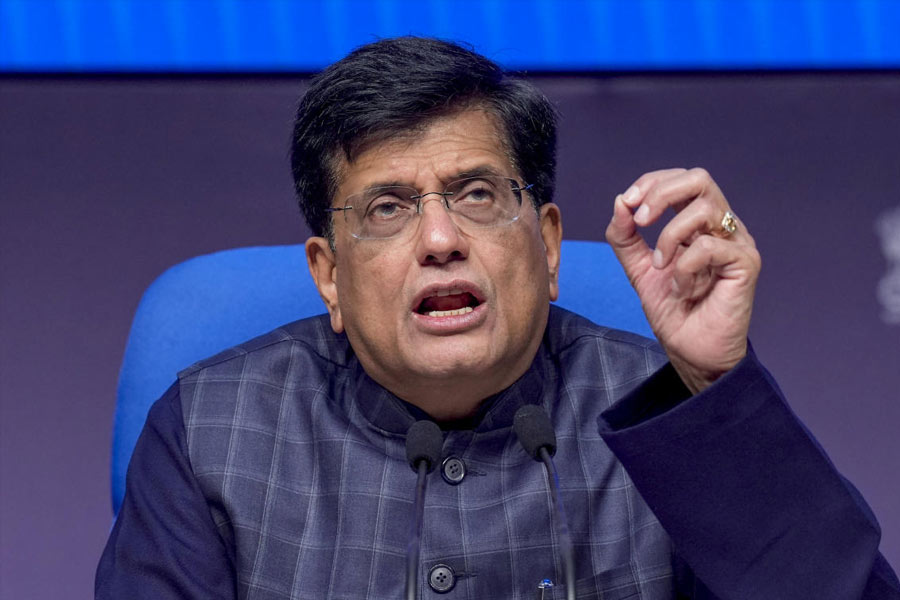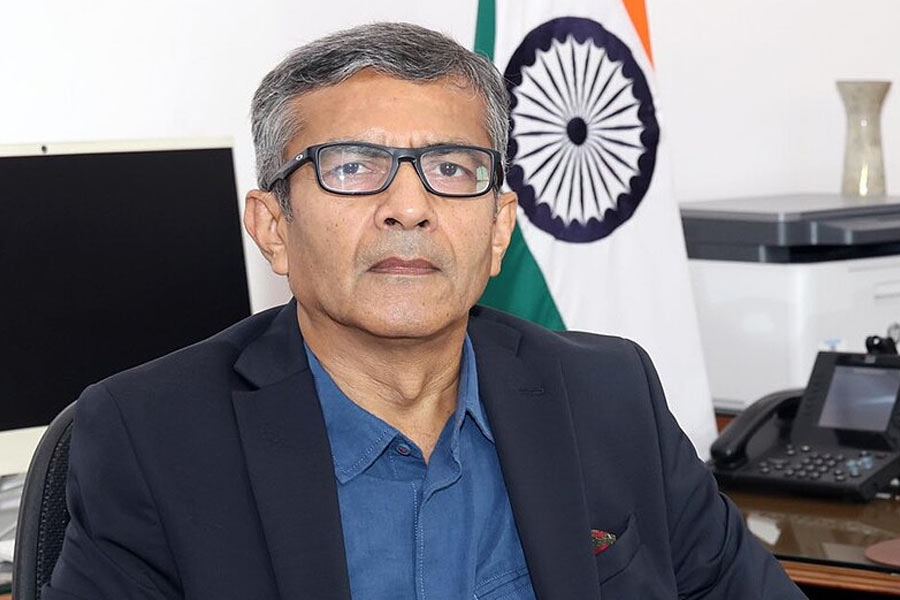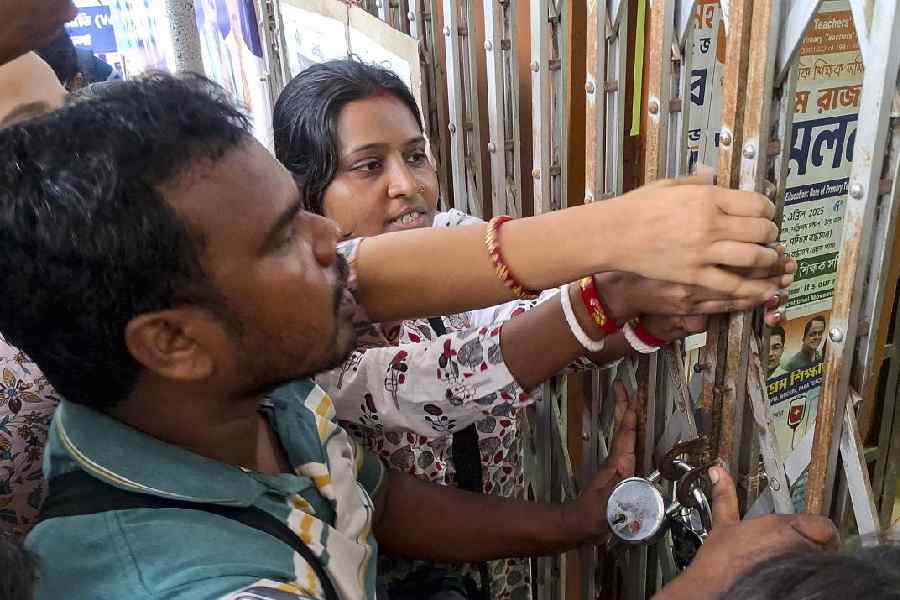 |
 |
 |
 |
 |
| (1) Surrinder M. Malhotra, executive chef of Chutney at the Metropolitan Hotel Nikko; (2) A lobster dish served with a choice of six chutneys by Malhotra; (3) Chef J.P. Singh, from ITC Maurya Sheraton’s Bukhara holds up skewered tandoori pomfret; (4) Pradeep Rozario of K.K.’s Fusion; (5) Assorted Fusion Kebabs, one of Rozario’s favourites |
Here’s a question for culinary philosophers: Do you see what you eat? Or, do you eat what you see? To put it another way, should you be seduced by the beauty of the dish that’s placed before you and should it make your mouth water long before you take the first bite?
At The Frontier restaurant in Delhi’s Ashok Hotel, Chef Rajiv Chopra knows that his food must look as good as it tastes. The kebabs are being skewered and naans flung into the air in an open kitchen just a few feet from the diners. Once it’s cooked, a tandoori pomfret is neatly placed on a fish-shaped ceramic plate and garnished with ring onions and tomatoes sliced like a flower. The kebabs go onto another specially-designed serving dish.
Cut to The Taj Mahal Palace & Tower, Mumbai, where Hemant Oberoi, corporate chef and grand executive chef of luxury division, keeps a stern eye on what’s happening in the group’s hotels. At the Taj Mahal in Mumbai, six chefs are continuously at work ensuring that dishes look great. Says Hemant Oberoi: “Today, people eat with their eyes first. So food is being created like designers craft their jewellery or clothing.”
Ok. Indian chefs are still a long way behind the artists of the kitchen who master-minded the nouvelle cuisine revolution in France. After all, how can our desi chefs compete when Indians are most used to slopping their curry over a mound of rice?
The answer is that a small band of Indian chefs are working hard at making their food look wonderful and they start long before it gets to the plate. They are paying attention to everything starting with open kitchens dressed up with skewers of meat and colourful ingredients. The heed to detail continues with careful attention to special crockery and cutlery.
And it’s carried all the way to the customer by serving food differently. Says Oberoi who has presented Indian cuisine in various parts of the world: “All dishes can be presented differently. Some of the sauces have to be poured lightly and have to be in small quantities. The garnishing has to be minimalist. Small is beautiful.”
Is the nouvelle cuisine approach to cooking finally invading Indian kitchens? The answer is that there’s a long way to go, but in today’s new competitive environment chefs are working hard to make their dishes look pretty in an almost western way.
Hemant Oberoi, for one, reckons that Indian food has seen a twist towards nouvelle cuisine style where visual appeal is taken into account. “But, by doing so, we do not compromise with the flavour. We are only enhancing the entire packaging of the food served,” he says.
He adds: “Nobody wants to have something that is just dumped on the plate. Food should come course by course. The concept of dining has changed. Even if one is having just rice and curry, the portion should be small and neat. The plate should not be cluttered and it should be served in good crockery.”
Inevitably, in such circumstances the eating experience does change. The emphasis is towards lighter and more delicate dishes without heavy sauces. “Guests should be able to savour their full meal in different courses, slowly and in batches. They should be able to enjoy their meal in a unique manner,” says Pradeep Rozario, chef and restaurateur who runs K.K.’s Fusion in Calcutta.
Rozario has become famous for his fusion food which is presented with heaps of panache. Some of his fusion kebabs include yakitori, reshmi kebab, babycorn and cottage cheese kebabs and even nasi goreng.
Another fancy item on Rozario’s menu is the sun-dried tomato masala kulcha served with tandoori chicken that is marinated with Thai spices and cooked in a clay oven. This is served with Mexican salsa. “The aroma is wonderful,” he says. “With imagination Indian food can match up to European standards,” says Rozario.
In fact, Rozario has successfully been presenting fusion food: incorporating Indian and Continental food and giving a new twist in terms of flavour and presentation. “I have not copied anyone and I have been fusing Indian food with Western spices and it works out fine. My food has always been received well,” he says.
Almost everywhere, the trick is to woo customers visually — and that starts long before the food is on the plate. The first thing that catches your eye at Geoffrey’s in Delhi is the kebabs that come on tall iron skewers.
Then, watch out for the Jumbo Non-Veg Platter, which is an assortment of kebabs with stuffed cottage cheese kulchas and minced lamb kulchas. All these come garnished in typically Indian style with thin onion rings and fresh lettuce leaves.
Getting the right crockery is also part of the game of looking good. From a zigzag platter for the main course to wooden plates, Vipin Luthra of Geoffrey’s uses more than a dozen types of plates and dishes. “Everybody serves good kebabs, but how you serve it is what makes the real difference,”he says.
 |
 |
| Chef Martin Rosario of Geoffrey’s shows off the Jumbo Non-Veg Platter; (below) Chef Manisha Bhasin of Dakshin with a sumptuous south-Indian spread |
That was the philosophy underlying the revamp at The Frontier two years ago. The restaurant hired a crockery designer to design its range of plates and dishes. So the kebabs are served in layered ceramic plates and hotplates are used to make sure the food is piping hot: “When you put the food on it, the end result is sizzling hot food on your table,” says Chopra.
Curries, are served in moon-shaped bowls. “Earlier gravy dishes were served in brass kadais. It is passé now,” says Chopra. The hotel hired crockery designers to have different crockery for every dish. And every plate carries a legend that says “specially created for Frontier.”
The restaurant isn’t stopping here. Recently, it introduced a degustation menu where guests can experience a 15-course meal in one sitting. From the starters to the dessert, each dish is served in different types of crockery.
Step into Chutney, the Indian restaurant at the Metropolitan Hotel Nikko, where Indian food is taken to another level altogether and colours are being used to make the dining experience more exciting. Also, here the effort has been to break away from a traditional ambience, so right at the entrance there’s a wine rack.
A combination of soft lighting, with a glass and woodwork interior gives the entire restaurant a contemporary look. There is nothing Indian about the restaurant except for the food and the name of the restaurant. “We serve Indian food in a European ambience,” says Surrinder M. Malhotra, executive chef of The Metropolitan Hotel Nikko.
The menu offers a chutney trail with 22 different types of chutney — and that also means an assortment of vivid colours. So, there’s murg malai kebab with seetaphal chutney. And there’s raw banana chutney that’s greenish in colour. Six chutneys are served every day with starters and main courses.
At Chutney, the concept of pre-plated food has taken over from usual way that curries are served in Indian restaurants. “Nowadays, most diners prefer pre-plated food. It is less messy and convenient. We no longer serve in big bowls where they can all help themselves,” says Malhotra who prefers to use imported meat for his kebabs. For burrah kebab, he uses Australian lamp chops and not the desi version. “It is easy to handle as the meat is tender and cooks faster,” says Malhotra.
In other ways too, today’s food czars are trying harder and offering diners more. “Today customers take it for granted that the food should look excellent,” says Ashish Sharma, manager at Punjabi By Nature, a stand-alone Indian restaurant where guests queue up for not less than 40 minutes to get a table.
It’s got to be the dining experience,” says Sharma. So, at Punjabi by Nature, a deejay is always stationed in the console to play “good music.” Even the music can be controlled at different volume on all the floors. Every table has a floating candle in addition to the many candles that light up the restaurant. The three-level restaurant has plasma television on every floor and the third floor is a lounge where diners recline on easy seats to soak in the atmosphere.
One restaurant that has turned presentation into an art form is Bukhara, the frontier cuisine restaurant at the ITC Maurya Sheraton, which has been a favourite with world dignitaries like President Bill Clinton.
Around 16 chefs headed by J.P Singh work round the clock leaving nothing to chance. Catering to more than 450 per head per day, the biggest draw here is the giant-size crispy tandoori. Once the 4 ½ feet long and 2 ½ feet wide crispy tandoori arrives at a table, the people at the next table invariably end up ordering it too.
“People normally look at one table and start to order for themselves. One table after the other, they all land up eventually ordering the same,” says Singh. The new addition in the restaurant is the private dining room. This was added about three to four years ago where 35 people can dine in a private setting.
The hottest favourite with many restaurants is, of course, the live cooking station. Take Dakshin, the south Indian restaurant at the ITC Marriott Hotel in Delhi, for instance. Manisha Bhasin, the hotel’s executive chef says the live station is one of the restaurant’s biggest attractions. Diners can have their appams prepared in front of them.
The fact is that looking good has become part of the food game. But, at the end of the day, beauty is decided not by the eyes but by the taste buds.










